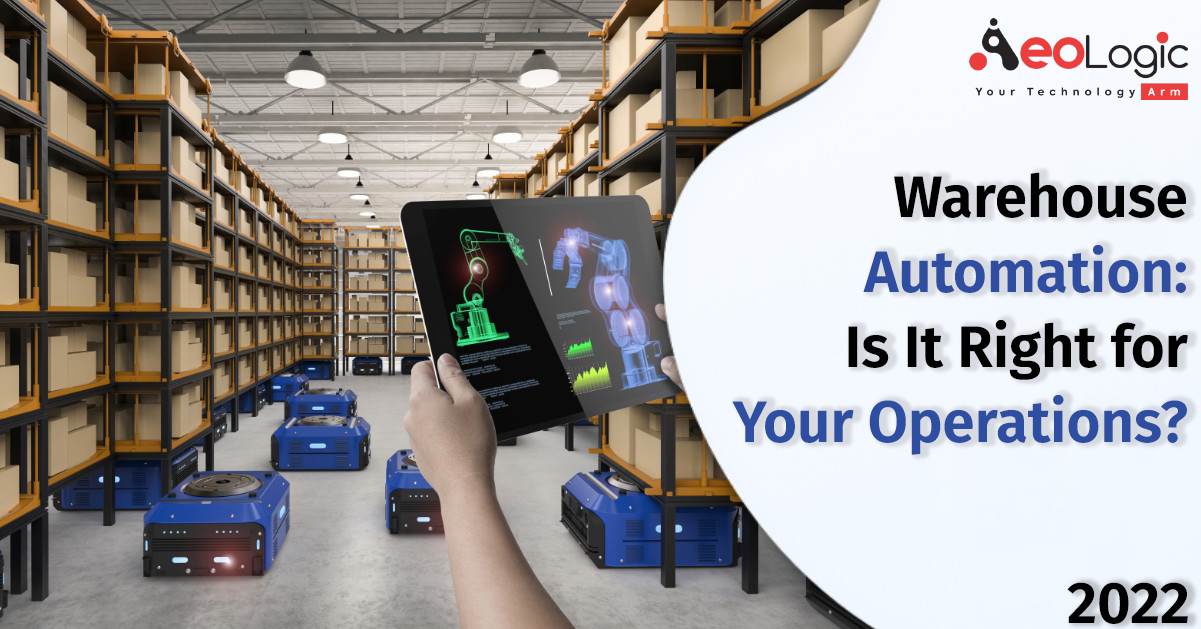In the warehouse of the future, all movements are steered by machines and computers with human supervising the automation instead of lifting boxes. Does a warehouse that optimizes the entire supply chain from vendors to end consumers sound like a distant vision? Not in the least.
In today’s era of modern technology, automating warehouses is no more done to get the competitive advantages but it has become a requirement. By implementing appropriate technologies, more than half of warehouses are automating their traditional warehouse workflow.
Is it Right for the Operation?
- Warehouse automation is the process of automating the movement of inventory into, within, and out of a warehouse with minimal human interaction.
- An inefficient warehouse can cause delivery times to be delayed, resulting in a terrible customer experience and excessive overhead expenditures.
- Hence, the goal of warehouse automation is to reduce repetitive physical work and manual data entry and analysis that can cause slowdowns in order fulfillment and inventory control.
- Warehouse automation, contrary to popular opinion, does not usually imply physical or robotic automation. In many cases, it simply refers to the use of software to perform tasks that would otherwise be performed manually.
- Although there are certain initial expenses associated with implementing an automated plan, these expenditures are typically offset by higher efficiency, increased sales, and improved customer service.
Role of Technology in Warehouse Automation
Following are the list of the few warehouse automation technologies-
1. Drones
Drones are a new technology for warehouses, and stock counting is particularly significant because it promotes productivity, as well as the customers’ supply chain and delivery predictability. Counting stocks and having the right stock level are very important. Drones can also operate at night without staff present, they scan barcodes and detect if pallet positions are empty or occupied, give real-time inventory data, and avoid manual counts.
2. Radiofrequency identification (RFID)
Radiofrequency identification (RFID) technology uses a small silicon microchip and antenna that allows the user to instantly count, track and manage millions of items in real-time, cutting costs and increasing the efficiency of the warehouse. A good RFID solution will keep the user connected and organized with real-time information, monitoring, and customized analytical reporting that can be deployed across multiple platforms including mobile, desktop, and web-based systems.
3. Robotics
The use of robotics is the most effective option. The robots travel across shelves on their own, picking and handling cases intelligently. As a result, quick warehouse inbound and outgoing are realized, and warehouse automation requirements are met efficiently and intelligently.
4. Cloud data
Products like amazon redshift, azure synapse, google big query and snowflake are leading the market but data engineers are still struggling with complex, hand-coded processes that cause delays and limit the effectiveness of those warehouses. Cloud data solutions ingest all the data in real-time, automate the entire data warehouse lifecycle with a model-driven workflow, and make data marts readily accessible across the organization with cataloging.
Conclusion:
To sum up, warehouse automation is a must-have for today’s business, and it will undoubtedly improve the organization’s efficiency. Technology-driven businesses are the way of the future, and warehouse automation is one of them.
Are you looking to get your warehouse business automated? If yes so please feel free to contact us at support@aeologic.com

Manoj Kumar is a seasoned Digital Marketing Manager and passionate Tech Blogger with deep expertise in SEO, AI trends, and emerging digital technologies. He writes about innovative solutions that drive growth and transformation across industry.
Featured on – YOURSTORY | TECHSLING | ELEARNINGINDUSTRY | DATASCIENCECENTRAL | TIMESOFINDIA | MEDIUM | DATAFLOQ






